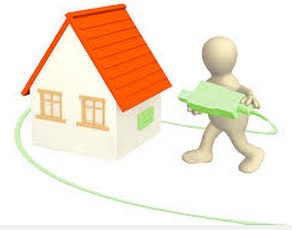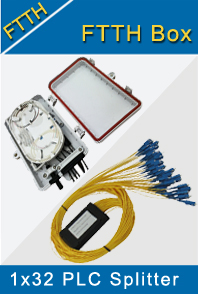-

- Sopto Home
-

- Special Topic
-

- FTTH Knowledge
-

- How to Select an OTDR?
FTTH Knowledge
- Solving the FTTH Rollout Problem in Multiple Dwelling Units
- WDM PON Introduction FAQ
- A Simple Overview of Optical Power Meter
- ODN is based on PON FTTH Optical Cable Network of the Device
- Using an OTDR to be an Expert in Fiber Link Testing
- How FTTH Broadband Works?
- Connections among Fiber Terminal Boxes & Patch Cables & Pigtails
- Easy to Install a Fiber Terminal Box
- What is Arrayed Waveguide Grating?
SOPTO Special Topic
Certificate



Guarantee
Except products belongs to Bargain Shop section, all products are warranted by SOPTO only to purchasers for resale or for use in business or original equipment manufacturer, against defects in workmanship or materials under normal use (consumables, normal tear and wear excluded) for one year after date of purchase from SOPTO, unless otherwise stated...
Return Policies
Defective products will be accepted for exchange, at our discretion, within 14 days from receipt. Buyer might be requested to return the defective products to SOPTO for verification or authorized service location, as SOPTO designated, shipping costs prepaid. .....
Applications

Sopto supply the best FTTH solutions for your network!
SOPTO Products
- Fiber Optic Transceiver Module
- High Speed Cable
- Fiber Optical Cable
- Fiber Optical Patch Cords
- Splitter CWDM DWDM
- PON Solution
- FTTH Box ODF Closure
- PCI-E Network Card
- Network Cables
- Fiber Optical Adapter
- Fiber Optical Attenuator
- Fiber Media Converter
- PDH Multiplexers
- Protocol Converter
- Digital Video Multiplexer
- Fiber Optical Tools
- Compatible
Related Products
Performance Feature
FTTH Knowledge
Recommended

How to Select an OTDR?
Optical Time Domain Reflectometer (OTDR) remains a fundamental tool for measuring fiber links, but the product offering has changed as both the available technology and the fiber network under test has changed.
Available products can be grouped into three classes
1. Break locators and fault finders
2. Mainstream Mini-OTDR’s
3. Optical Characterization Platforms
To choose, first evaluate your needs and the skill of the intended users honestly. Questions to ask:
1. Are you Installing or Maintaining fiber?
2. If Maintenance, is finding the location of the fault the main task?
3. If Installation, do you need measure more than loss and length? E.g. Connector Quality, Dispersion and Optical Return Loss?
For simple maintenance, a simple or low cost OTDR is a good fit. They are easy to use, require the lowest possible investment and some even provide total link loss and optical return loss values.
.jpg)
If you are doing complex installation of high speed networks, then you are probably looking for an Optical Characterization Platform. These allow modules, either to be plugged in or better yet snapped on and give the most flexibility, speed and performance.
If you are in between the cases above, welcome to 80% of the users. You need a regular Mini-OTDR based system. There are many products on the market and choosing the best fit requires both a look through the key spec’s, and some hands on time.
.jpg)
Figure 1 Simplified Block Diagram and Examples of Events on an OTDR
Figure 1 shows a simplified block diagram and an example of how different “events” appear on an OTDR display or “trace”.
An OTDR sends pulses of light into a fiber and digitizes the reflected backscatter signal coupled back to its detector. Using the fiber’s refractive index, it converts time into distance over a scale of 100m to beyond 200km. It can measure distance to faults very accurately.
Whether 100m or 10km long, the increased deployment of fibers needs to be tested in less time with fewer
people.
The key specification for an OTDR is dynamic range. It’s the dB difference between the initial power level reflected from the fiber under test and the value equal to the noise floor of the detector; it is specified at the OTDR’s largest pulse width when making a measurement for 3 minutes.
This figure in dB determines both how far you can measure and how fast an instrument can obtain a clear trace.
Every dB counts. In fact 1db extra dynamic range over another unit can mean an increase in speed and productivity of up to 2X.
Most products on the market are grouped into performance ranges and can be segmented into dynamic range classes of the nearest 5dB. Figure 2 outlines the dramatic effect of dynamic range vs. averaging time to acquire a good trace.
.jpg)
Figure 2 Dynamic Range vs. Average Time to Acquire a Trace
If you are driving hours to measure 2 short fibers, you don’t need to pay the premium for a 45dB OTDR. But if you are installing Metropolitan fiber networks with 864 fibers, the time difference can add up to weeks and a faster OTDR can pay for itself in the very first cable measured. Dynamic range is key, but Ergonomics, storage and other spec’s should influence your decision.
Table 1 Key Product Specifications and their importance
|
Dynamic Range |
Determines range and speed. Serious products range from 30-45db for Single mode (SM) testing, 18-34dB for Multimode (MM) fiber testing. Compare products at the same pulsewidth. |
|
Reflection Accuracy |
Reflections or Reflectances are caused by connectors, mechanical splices, and breaks. High speed networks require small reflectances. Look for a product that measures accurately across a realistic range like 14-60dB with an accuracy of +-2dB. A great test is to see if an open 100m from the unit reads 14dB. |
|
Loss Accuracy And linearity |
Determines total link loss and individual splice loss accuracy. Measuring fusion splices takes high dynamic range and repeatability. Measure a splice a few times and evaluate the instruments repeatability. |
|
Battery Life –hrs |
Look for 4+ hours and fast charge times, does the unit indicate actual time remaining or simply display a guess-O-gauge? |
|
Size and Weight |
Products exist from 1kg -9kg. In today’s crowded POP’s which unit will fit? The smaller the unit, the lower shipping costs are too. If you want to hold it while measuring and you’ll need a unit <4kg. |
|
Trace storage |
What is the internal and optional memory in the product? Does it support flash cards? Do you want a hard drive in an instrument that could be dropped? |
|
User interface |
50% of users love touchscreen. 50% prefer reliable keys. Many users? Choose an OTDR with a variety of interfaces. A keyboard input port is a must if you are documenting lots of fibers. |
|
Expandability |
Just enough test or fit for future? Empty frames can cause extra weight and complexity. Inquire if a built in source is an option or standard. |
|
Available Wavelengths |
A single wavelength allow fault location, Dual sources can show changes in loss at different wavelengths to detect fiber bending. |
|
Service and Support |
Asking what an extended warranty would cost is a great indication of the reliability of a unit and efficiency of the repair organization. Can you get on-site training for your unit? |
Consider the whole product and all its supplied accessories and you’ll make a decision that fits your whole process better. Buy as much dynamic range as you can afford. It makes everything possible.
For more products’ information, please browse our website or contact a Sopto representative by calling 86-755-36946668, or by sending an email to info@sopto.com.



